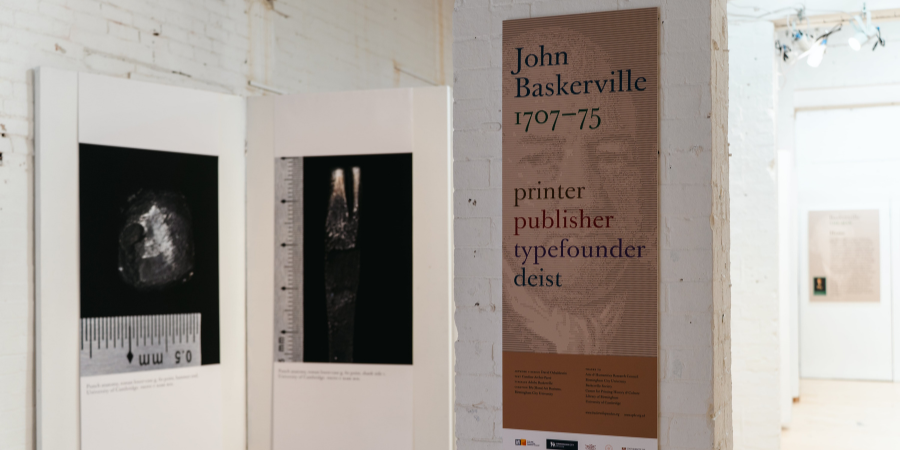Research News Last updated 02 July 2025

An iconic Birmingham-born font and the centuries-old craftsmanship behind it are taking centre stage in a new exhibition in the Jewellery Quarter.
Capturing Craft: The Making of the Baskerville Punches will open at The Hive on 2 July, shining a spotlight on the precision tools used to create the timeless Baskerville typeface - and the Brummie legacy behind it.
The exhibition is part of the Small Performances: Baskerville Punches project, now in its second year.
Led by Birmingham City University (BCU) in partnership with the University of Cambridge and Cambridge University Library, it combines cutting-edge technology with traditional craft techniques to uncover the hidden history of punchcutting.
As well as showcasing intricate images of the original Baskerville punches, the free exhibition includes historic tools and films produced at BCU’s School of Jewellery which showcase demonstrations off the craft - all offering a closer look at a once-endangered process that shaped the print industry.
The exhibition also reflects Birmingham’s wider cultural status, coming shortly after the city was named a World Craft City by the World Crafts Council.
Sophie Slade, Heritage Programme Manager at The Hive, said: “I’m thrilled that we are hosting Capturing Craft at The Hive as it helps us celebrate the heritage of the Jewellery Quarter and its trades, especially heritage crafts.
“It’s especially timely as we celebrate Birmingham being awarded World Craft City Status.
“Baskerville’s story encapsulates the creativity and resourcefulness shown in the Jewellery Quarter both historically and today.”
Originally crafted in the 18th century by Birmingham printer John Baskerville, the typeface that bears his name now appears in everything from Microsoft products to printed books worldwide.
Yet he was only recognised with a blue plaque in the city earlier this year, more than 250 years after his death.
“This project is breathing new life into an endangered craft whilst inspiring modern craftspeople, designers, engineers and the wider public to appreciate this craft,” said Marcos Martinon-Torres, Pitt-Rivers Professor of Archaeological Science at the University of Cambridge and Small Performances project co-lead.
“The team at Small Performances brings together a unique blend of expertise - from typeface design to archaeological science, and printing history to evolutionary biology!
“We’re using cutting-edge technologies such as chemical analysis and 3D printing, combined with hands-on craft experimentation, to bring Baskerville’s works and processes to light.”
Capturing Craft runs until 30 July, and is open to the public Tuesday to Friday, 10am to 3pm.